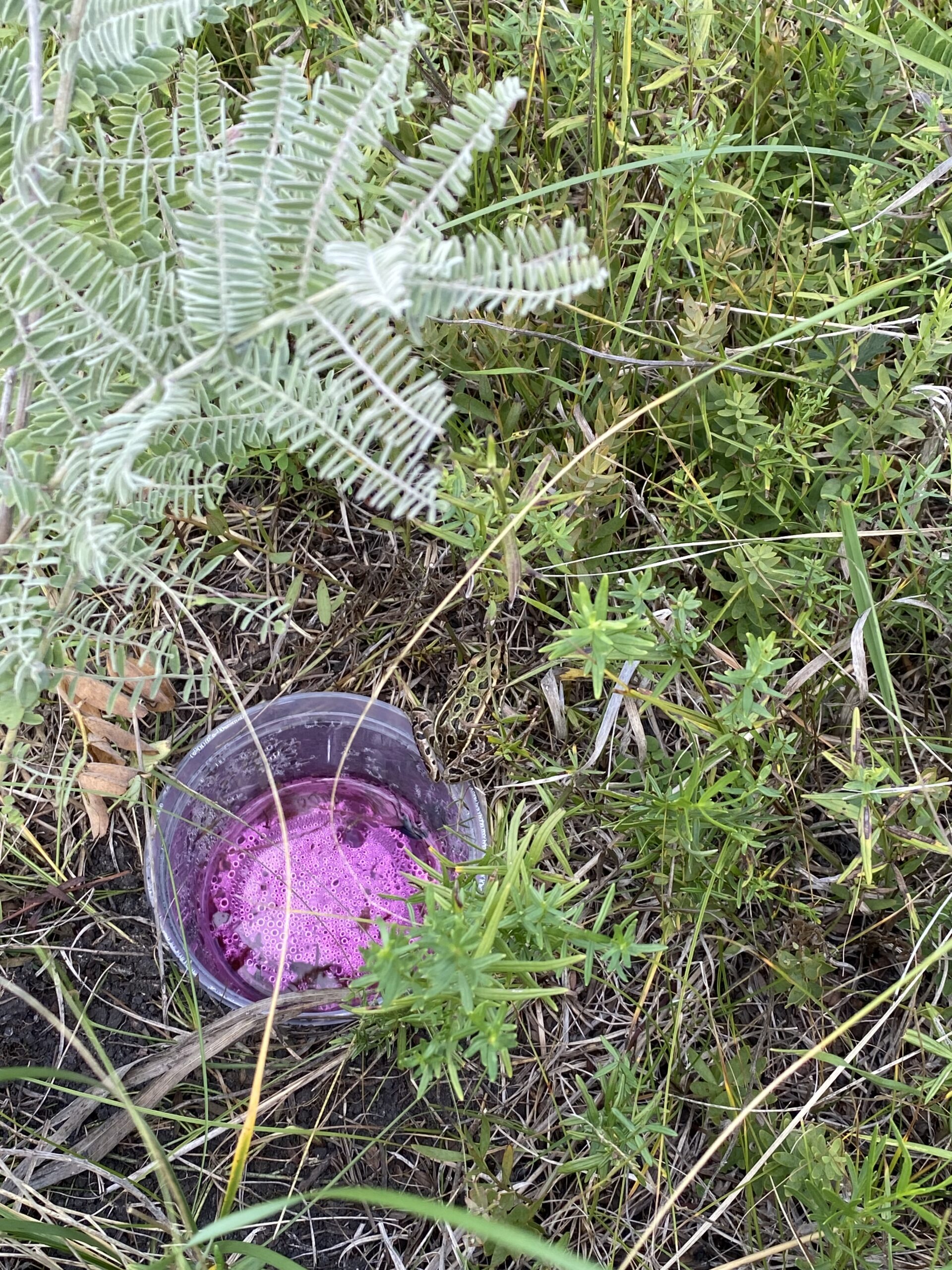Ants are an integral part of ecosystems, playing a role in seed dispersal, detritus removal, pest predation, and nutrient cycling. Because ants nest in the ground, they are particularly susceptible to any process that disturbs the earth and can be heavily impacted by land use practices and management decisions. Diane Roeder, at Augustana University, designed this survey to quantify ant species diversity in remnant and restored prairie patches in western MN. These sites are primarily managed by fire, a type of disturbance that has been hypothesized to impact ant species differently via mortality and/or changes in habitat structure. During the summer, Diane and members of team Echinacea sampled 45 prairie sites (30 remnant, 15 restored), deploying a total of 415 pitfall traps. Diane and her colleagues are in the process of sorting ants from other ground-dwelling invertebrates captured by the traps and will identify specimens to compare abundance, species richness, and community composition from sites under different management regimes. In addition to measuring diversity, They also deployed sentinel prey items to determine whether arthropod communities in these areas remove prey at different rates as a measure of ecosystem services provided by predatory arthropods. To do this, they set out small cages containing moth eggs and recorded the number of eggs removed. In the future, Diane hopes to compare the overall arthropod communities between these types of sites from multiple years of sampling.
- Start year: 2023
- Location: Prairie remnants and restorations in Solem Township, MN.
- Overlaps with: Ground Nesting Bees
- Data collected: species identities and richness (all arthropods, with a focus on ants), sentinel prey removal (number moth eggs removed)
- Samples or specimens collected: All invertebrates collected in pitfall traps (stored at Augustana University, Sioux Falls, SD)
- Products: Stay tuned!



Leave a Reply